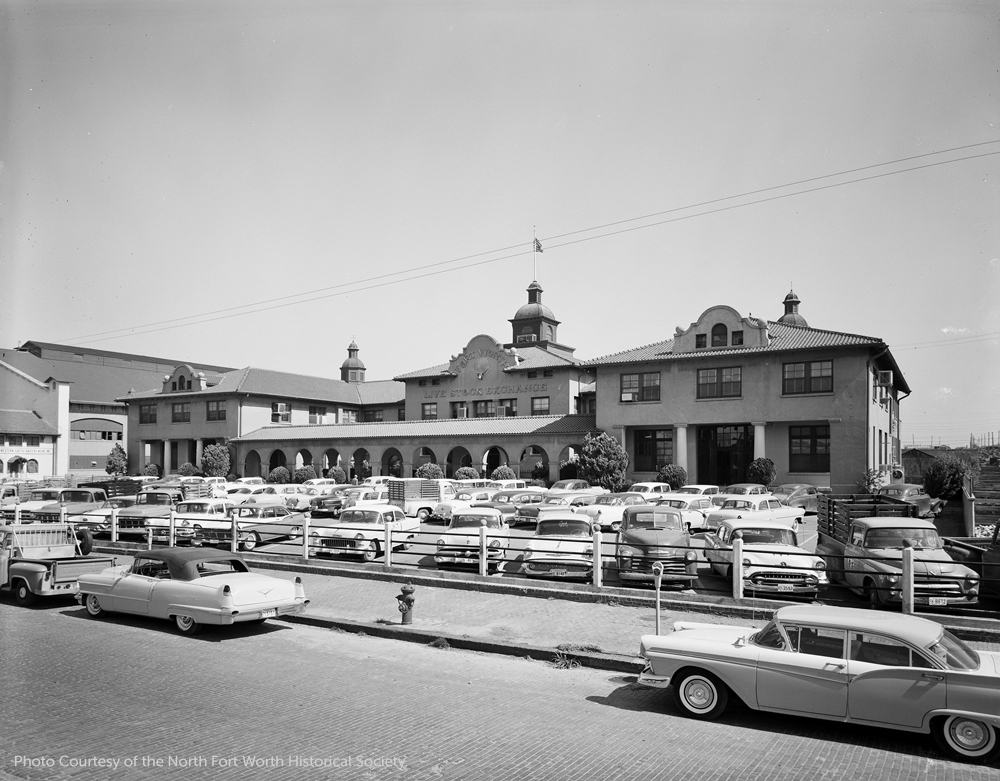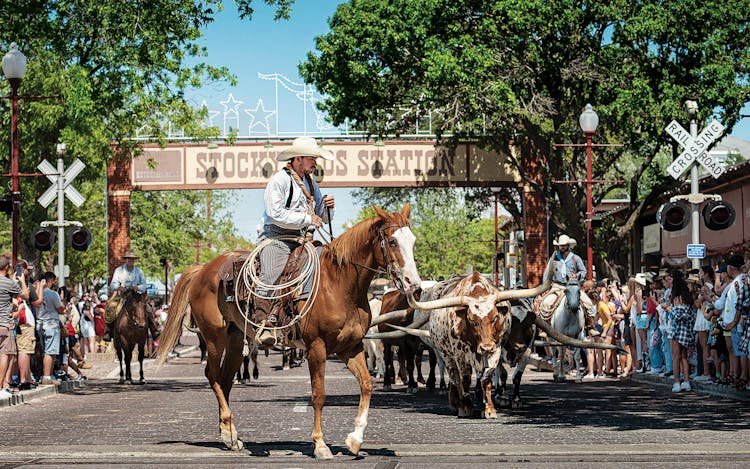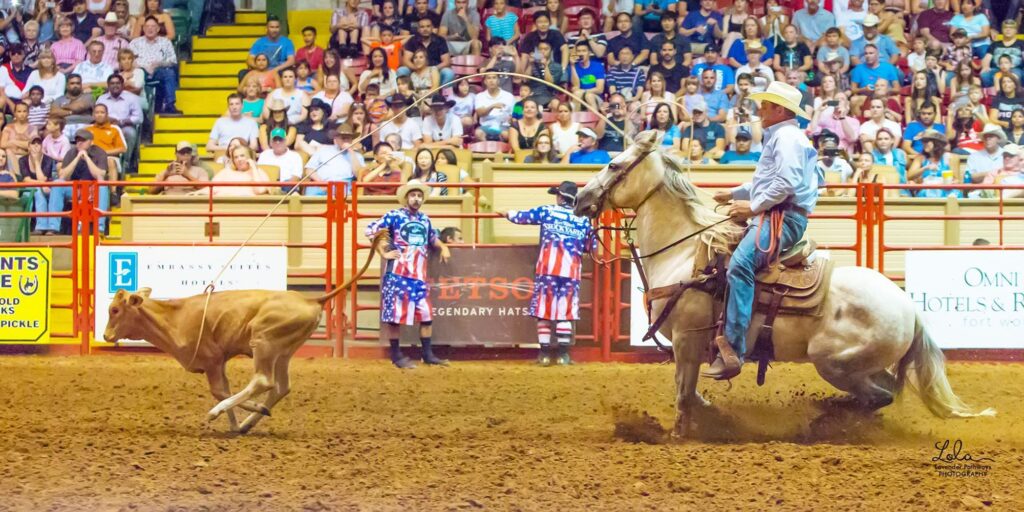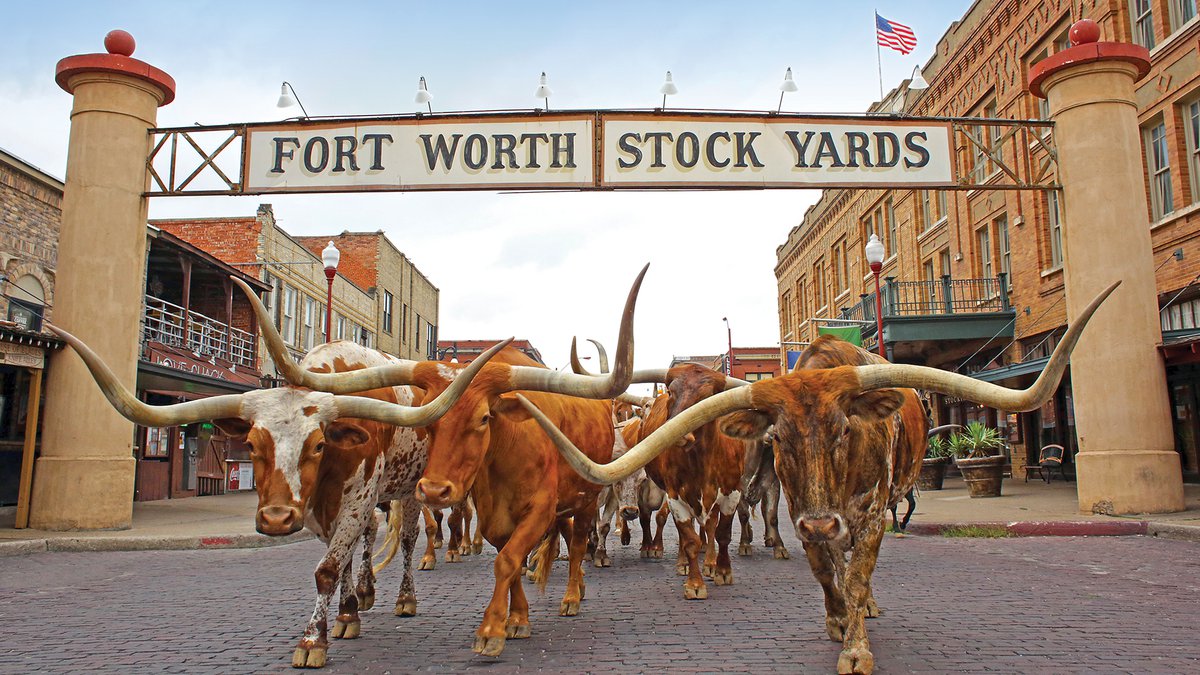The Fort Worth Stockyards Historic District is a 98-acre cultural and historical landmark in Fort Worth, Texas, that encapsulates the spirit of the American West. Listed on the National Register of Historic Places in 1976, the Stockyards reflect a time when livestock trade, railroads, and cowboy culture shaped Texas’s economic and social fabric.
Today, the district thrives as a hub for history, entertainment, and Western-themed attractions, drawing visitors from around the globe.
History of Fort Worth Stockyards

The Stockyards trace their roots to 1849 when Fort Worth was established at the fork of the Trinity River. Initially, the town served as the last major stop for cowboys driving cattle along the Chisholm Trail. By the mid-1870s, with the arrival of the Texas & Pacific Railroad, Fort Worth evolved into a vital livestock trading center, earning its moniker “Cowtown.”
In 1890, the Fort Worth Union Stockyards Company opened, covering 206 acres. The Stockyards proliferated, supported by packing companies like Swift and Armour, which established operations in the area. By 1907, the district handled over a million cattle annually, solidifying its position as one of the largest livestock markets in the U.S.
The Golden Era of Livestock Trade

From the 1880s to the 1950s, the Stockyards became the largest livestock trading center in the Southwest. It hosted a wide range of cattle, hogs, and sheep, and during World War I, its Horse and Mule Barns were the largest equine market in the U.S. The Stockyards peaked in the 1940s, bustling with activity as livestock traders, ranchers, and cowboys converged.
However, the rise of trucking and countryside livestock auctions in the 1950s led to a decline in activity. By the 1960s, the Stockyards were a shadow of their former glory, with live auctions primarily restricted to prize-winning bulls and show-quality longhorns.
A Revival of History and Culture
Efforts to preserve the Stockyards began in the 1970s, transforming the area into a vibrant historical and cultural destination. The district now features 46 contributing buildings, including landmarks like the Livestock Exchange Building, Cowtown Coliseum, and the iconic entrance sign.
Key attractions include:
- Mule Alley: This refurbished section boasts nearly 200,000 square feet of restaurants, shops, and event spaces. It offers live music, carriage rides, and scenic outdoor patios.
- Hotel Drover: A 200-room luxury Autograph Collection hotel that celebrates the pioneering spirit of the West. Its amenities include an event barn, ballrooms, and a backyard with fire pits and dining spaces.
- Billy Bob’s Texas: Known as the world’s largest honky-tonk, it features live music, dancing, and bull riding.
- The Grapevine Vintage Railroad: A heritage rail service connecting Grapevine and the Stockyards.
Events and Experiences

The Stockyards honor cowboy traditions with daily cattle drives featuring Texas longhorns. Rodeos, live music, and re-enactments immerse visitors in the sights and sounds of the Old West. Restaurants like Riscky’s Barbeque and shopping venues such as M.L. Leddy’s Western Wear preserve the area’s authentic charm.
The Stockyards also host special events, from sesquicentennial celebrations to heritage festivals. The Cowtown Coliseum, a historic venue, remains a hub for rodeos and Western-themed entertainment.
Preserving the Legacy
The Fort Worth Stockyards stand as a testament to the resilience of Texan heritage. Through careful restoration and innovative development, the district has maintained its historical essence while embracing modern attractions. Whether exploring the historic Horse and Mule Barns or enjoying s’mores by the fire pits at Hotel Drover, the Stockyards offer a unique blend of history and hospitality.
For an even richer experience, consider exploring the culinary delights in and around the Stockyards. Incloodie Food Tour offers an immersive way to discover Fort Worth’s unique flavors while diving into its vibrant culture and history. Book a tour today for your next adventure through this iconic district!

